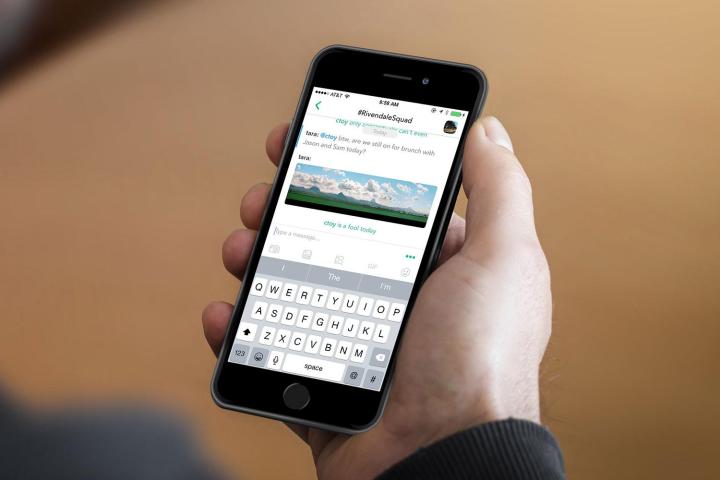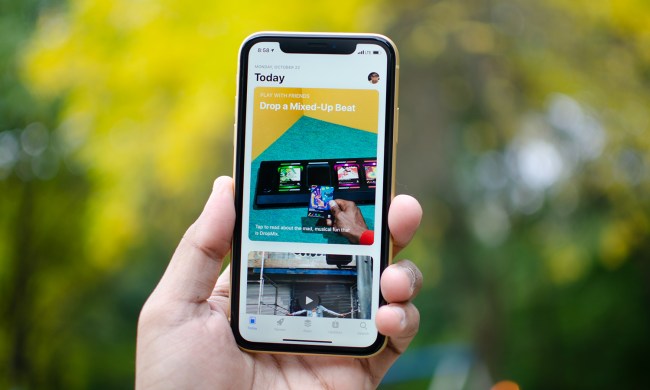
“The last decade or so of social networking has been about defining and acquiring personal networks of friends, followers, contacts, etc.,” Toy says. “The next phase we’re seeing companies focus on – and struggle with – is what to do with them. Facebook and LinkedIn have chosen to become media publishing platforms, and Snapchat just did the same thing with Discover. With Bindle, we’re much more focused on what attracted us all to those platforms in the first place — easy, satisfying communication and connection.”
As it launches version 2.0, Bindle’s focus is on being a platform for communication between its users is clear. The rooms, created by users to house conversation about a specific topic and searchable labeled with searchable hashtags, are quick-moving places where the conversation can be shaped easily by the personalities in the room.
If AIM had continued to grow up with the generation that used it, it may have become Bindle.
The basic view of each room is a continuous stream where messages pop up and scroll up the page as more people chime in. But there’s a lot more going on than just an ongoing river of text. Users can address one another using @mentions a la Twitter. Having your name mentioned delivers a push notification so even when you aren’t in app you can check in and see why your name came up. For discussions that require more privacy, users can whisper at one another using a “/whisper” command to keep the text just between the two of them. Users can also set “statuses” of sorts, using an “/emote” command to convey an action or feeling to the room.
Some of these features will feel familiar to users of chat platforms like HipChat and Slack. Toy says Bindle has a place in professional settings as well. “We’re actually seeing Bindle used frequently for professional purposes right now, especially in any networking context. People are creating Bindle chats for their professional peer groups, like iOS engineers or startup founders, and at conferences like Techmanity,” he says.
But while other apps are quick to define their focus, Bindle is more open-ended. Users can pop into their work chat—likely a passworded group to wall off communications just between colleagues — then check out other, more open chats to see what people are saying about other topics of personal interest.
“The unique hashtag ID for each chat makes it really easy to quickly put the group together even if you don’t work at the same company or don’t even have each other’s contact information. All of our features are designed to make it easy to get people together and communicate, and that will continue to find relevance in work environments for sure, whether for networking or internal enterprise uses,” Toy explains.
One of the other strongest suits of Bindle is its adaptation of more modern methods of communication. In specific, Toy understands that messaging is no longer just about text—it’s a visual experience as well. “Visual communication is core to digital communication and we want to make it fluid and efficient, in line with every other aspect of Bindle.” Bindle users are able to pull up stickers and GIFs, sourced through Giphy, and integrate them right into the conversation. Got the perfect reaction GIF for a situation? Search, tap, send, and watch the “lols” roll in.
“Our users already comment on how much they prefer how we’ve integrated stickers or GIFs over other messaging apps – and we’re always thinking about how our users want to express themselves,” Toy says. While custom stickers and GIFs aren’t available yet, Toy says it’s something they’re looking into for the future. “I think easily creating your own is the direction that those media are taking next, and we’ve been looking at it too.”
Of course, the challenge that comes with allowing users to upload what they want freely and use it at will is similar to the problem of allowing them to say whatever they like: there’s always going to be someone out there who ruins the whole thing for everyone.
Hate speech and verbal abuse has become an all too prominent part of platforms like Twitter and Reddit. Bindle has ambitions for bigger rooms—up to 3,000 people—which means moderation may become a problem.
“Historically, the best moderated communities are those that have been given the tools to moderate themselves and define their own culture – that’s what we plan on doing regardless of whether your chat is for your closest friends or for people you just met,” Toy offers. Whether that’s enough to keep larger groups from getting overrun by troll tactics will have to be seen.
If AIM had continued to grow up with the generation that used it, it may have become Bindle. The cross-platform communication app has that familiarity of typing in your screen name and hopping online to find some people with similar interests, but it’s filled with the modern flair that we’ve become so used to on platforms like Google Hangouts, Facebook Messenger, and Twitter. Bindle is group chat grown up, and its scalable model approach to group chat presents interesting possibilities both for networking and personal communication.
Bindle is available to download for free for iOS and Android.






